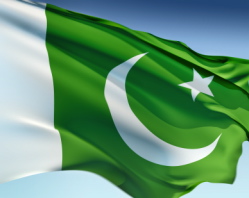Jordanian archaeologists have uncovered what they believe to be the world's first church dating from 33 to 70 AD.
"We have uncovered what we believe to be the first church in the world, dating from 33 AD to 70 AD," the head of Jordan's Rihab Centre for Archaeological Studies, Abdul Qader al-Husan, told reporters according toThe Age.
He said it was uncovered under Saint Georgeous Church, which itself dates back to 230 AD, in Rihab in northern Jordan near the Syrian border.
"We have evidence to believe this church sheltered the early Christians, the 70 disciples of Jesus Christ," Husan said.
These Christians, who are described in a mosaic as "the 70 beloved by God and Divine," are said to have fled persecution in Jerusalem and founded churches in northern Jordan, Husan added.
He cited historical sources which suggest they both lived and practised religious rituals in the underground church and only left it after Christianity was embraced by Roman rulers.
The bishop deputy of the Greek Orthodox archdiocese, Archimandrite Nektarious, described the discovery as an "important milestone for Christians all around the world."
Researchers recovered pottery dating back to between the 3rd and 7th centuries, which they say suggests these first Christians and their followers lived in the area until late Roman rule.
Inside the cave there are several stone seats which are believed to have been for the clergy and a circular shaped area, thought to be the apse.
There is also a deep tunnel which is believed to have led to a water source, the archaeologist added.
Rihab is home to a total of 30 churches and Jesus and the Virgin Mary are believed to have passed through the area, Husan said.









 1986-1990: Tabloids, appearance, Bad, autobiography and films
1986-1990: Tabloids, appearance, Bad, autobiography and films 1991-1993: Dangerous and
1991-1993: Dangerous and  1993-1994: Sexual abuse accusations and marriage
1993-1994: Sexual abuse accusations and marriage 1995-1999: HIStory, second marriage and fatherhood
1995-1999: HIStory, second marriage and fatherhood 2000-2002: Label dispute, Invincible and third child
2000-2002: Label dispute, Invincible and third child 2003-2007: Documentary, trial and
2003-2007: Documentary, trial and  2009: Death
2009: Death











